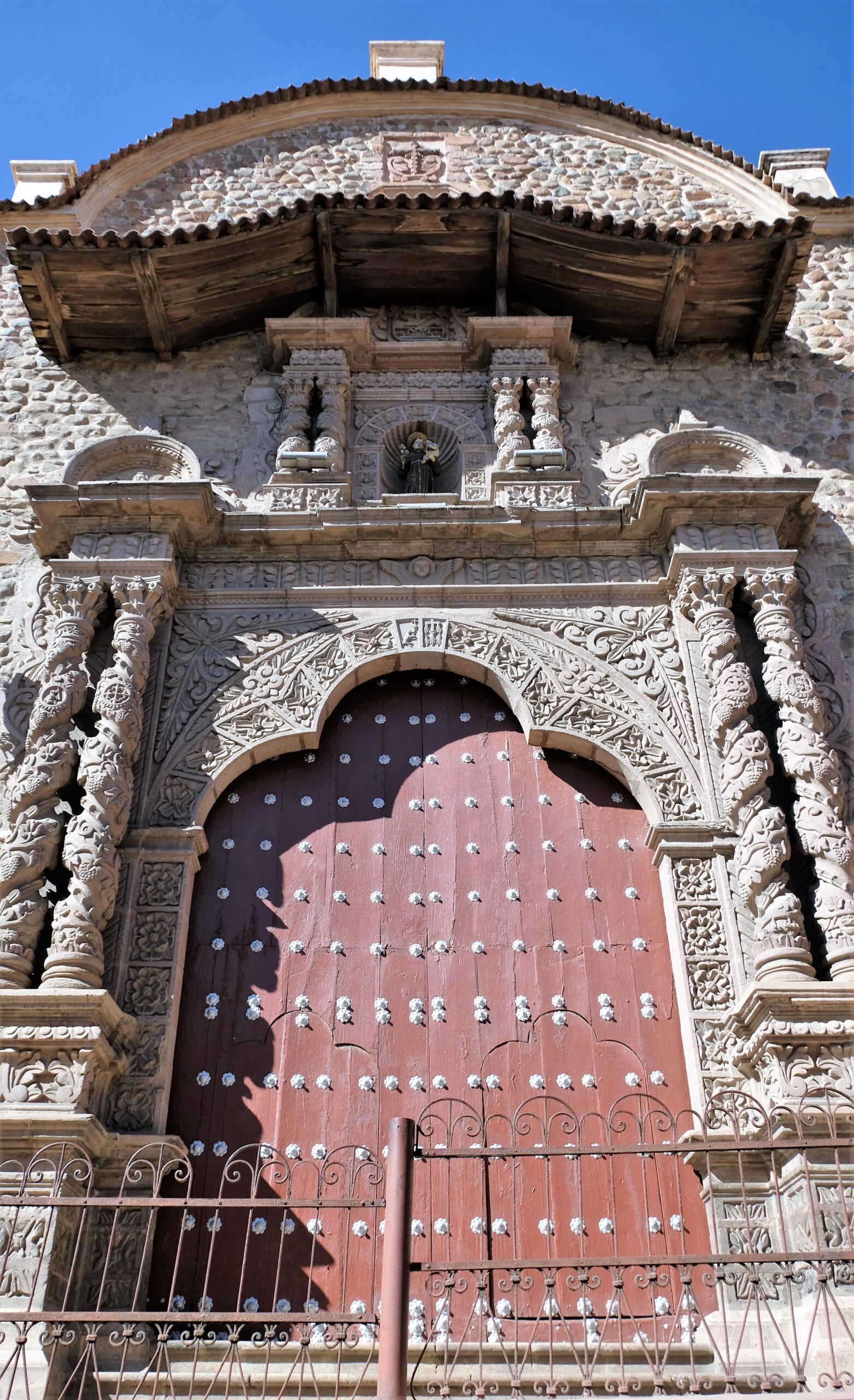Potosi, once the richest city in the world was my next destination. Leaving La Paz my end goal was Uyuni to see the salt flats. Stopping at Sucre and Potosi were on route, so it would have been silly not to stop by. In the end these to stopovers work very much in my favour. Some day’s I felt better and others worse. The extra time I took in Sucre and Potosi combined with the additional rest and slower pace of sightseeing could only have aided my recovery. With hindsight I’m glad I didn’t go straight to Uyuni, arriving there in the condition I left La Paz would have been terrible. Though Sucre and Potosi aren’t known for the hustle and bustle they certainly have more to offer than the town of Uyuni. Enough about that.
Back to Potosi. Spending the additional 2 days in Sucre were good and necessary. Slowing things down helped, but I had to move on. As I’ve already mention in my last post on La Paz and Sucre, I wasn’t well, an understatement. Not getting to see the surrounding areas of Sucre was a pity, which I was fine with. When I’m not feeling well, I don’t like to move, when I’m not moving, I get itchy feet and anxious. Not wanting to prolong my time in Sucre I decided to move on.
Getting to Potosi from Sucre
Sucre to Potosi is around 155km. Methods to get there are plenty too. Nonstop transport be it taxi or bus takes about 3hrs. For nonstop buses it cost around US$3.10 (www.ticketsbolivia.com), and I heard there is a “ferrobus” (like a train) but only goes once or twice a week. An alternative it a taxi. Yes, you read that correctly. I cannot think of any countries where it is that affordable to travel 155km by taxi. If you choose to do the taxi option, there are two:
- Shared taxi – cost is around 50BS, approximately US$7.40
- Taxi by your self – cost is around 200BS, approximately US$29-30
- If you can’t speak Spanish, I’d suggest asking your Hostel/B&B/Hotel to arrange this; it prevents any misunderstanding on price &/or that you are or not willing to share the taxi
Guess which option I took? Not being in the best state physically and mentally I took the easy option. For that price I did not feel guilty either. I didn’t just capitulate, I looked into taking the bus but left it too late – tried to book the day before leaving Sucre. There was availability the following day but that meant another day in Sucre…I needed to be on my way. The lady at B&B Santa Cecilia arranged the taxi for me. No mess, no fuss; get picked up at the B&B and get dropped off at my accommodation in Potosi.
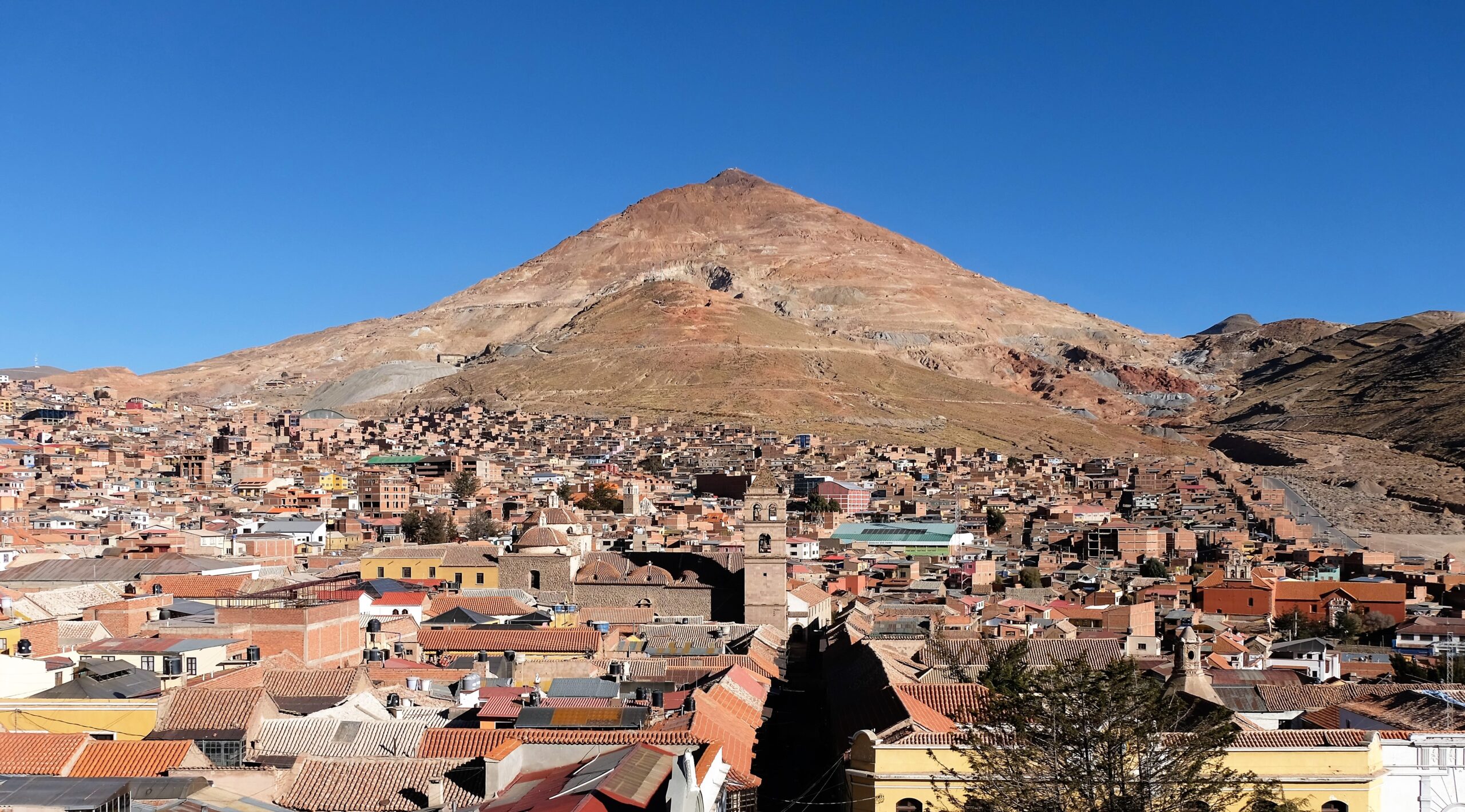
Accommodation
For the first time in months I couldn’t find accommodation using my preferred Hotels.com, instead using Booking.com. I found Hostal Patrimonio, right in the heart of the historical centre; that’s not saying much because the historical centre is tiny so is the city ?. Anyway, the journey to Potosi went without a hitch. The driver got a little lost when we entered Potosi, but after asking two people for directions I was dropped off at the front door of Hostal Patrimonio (the link may not work because their website was not working the last time I checked).
I have nothing back to say about the accommodation. For the price, the room was very spacious, nice bathroom and everything was exceptionally clean. The layout of the place is very odd. A double story, all the rooms facing inwards to a covered courtyard. In the middle of this tiled courtyard an oversize water fountain – something you’d see in the garden of a palatial countryside state house. Nothing wrong, it just seemed so out of place and so out of character with the exterior and that of the city. If you’re looking for a place in Potosi, I have not hesitation in recommending the place – nothing fancy, nice people, clean and perfect location. FYI – I stayed for 3 nights.
Food
When I arrived, I felt drained, I’m sure the altitude didn’t help…not having a proper night’s sleep in over a week wasn’t helping either. After checking in I crashed on my bed. Now the periodic coughing fits had become the norm. Waking up at dusk I hadn’t eaten the entire day, I was starving! Every meal I had in Potosi (except for breakfast which I had at Hostal Patrimonio) was at Café Pub 4.060. That first night I was the only one in the restaurant! Thankfully on the other nights it was fully, mainly locals which is a good sign. Service was super friendly (seems common to have super friendly service in Bolivia), food was more Western style but not complaints; nothing to write home about. An easy option if you don’t want to venture around looking for a place to eat.
Potosi…and Cerro Rico
I called Porto the city of past glories. Potosi is the extreme of that. Wondering around the historical centre you couldn’t imagine this was one of the, if not the wealthiest city in the world…many years ago. At just over 4000m above sea level this is one of the highest cities in the world. A dreary, dry and dusty location this was the money pot of the Spanish Empire in the late 16th Century. It is hard to imagine a place like this overflowing with wealth, and it did. It was so wealthy that the saying “to be worth a Potosi” / “vale un Potosi” meaning “to be of great value” is still used today.
Potosi lies at the foot of the Cerro Rico / Cerro de Potosi, colloquially referred to as Cerro Rico (Rich Mountain), the source of its past wealth, silver. During the second half of the 16th century Cerro Rico was producing 60% of the worlds mined silver. With the silver came richest beyond belief, not just putting Potosi on the world map but making it the richest city in the world. This near abundance of silver was carted by mules and llamas to the Pacific coast, ending up in either Nombre de Dios or Portobelo in Panama where it was shipped to Spain. Needless to say, this filled the coffers of Spanish making them even more wealthy and powerful. Almost everyone involved in the mining profited immensely…except those working in the mines – more about that later.
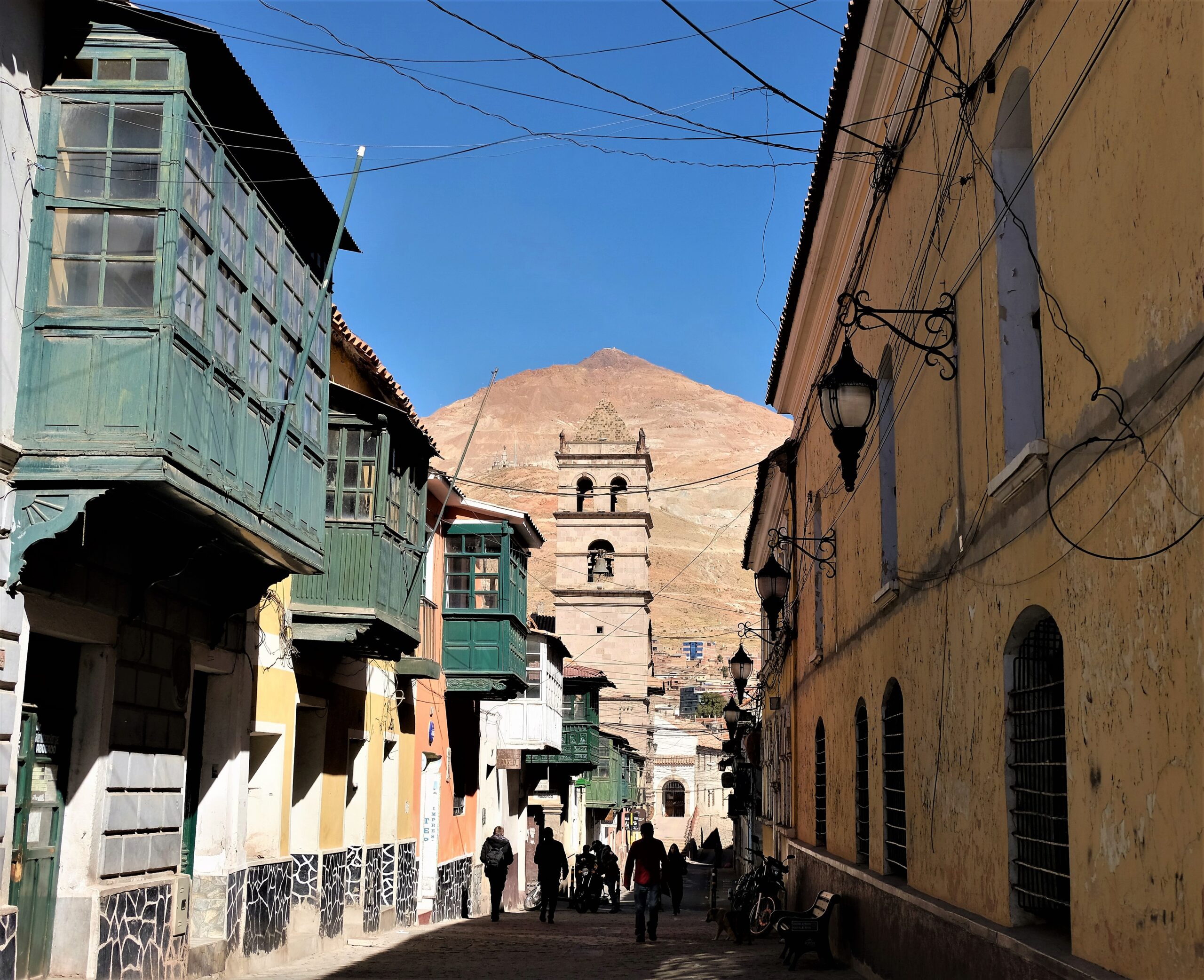
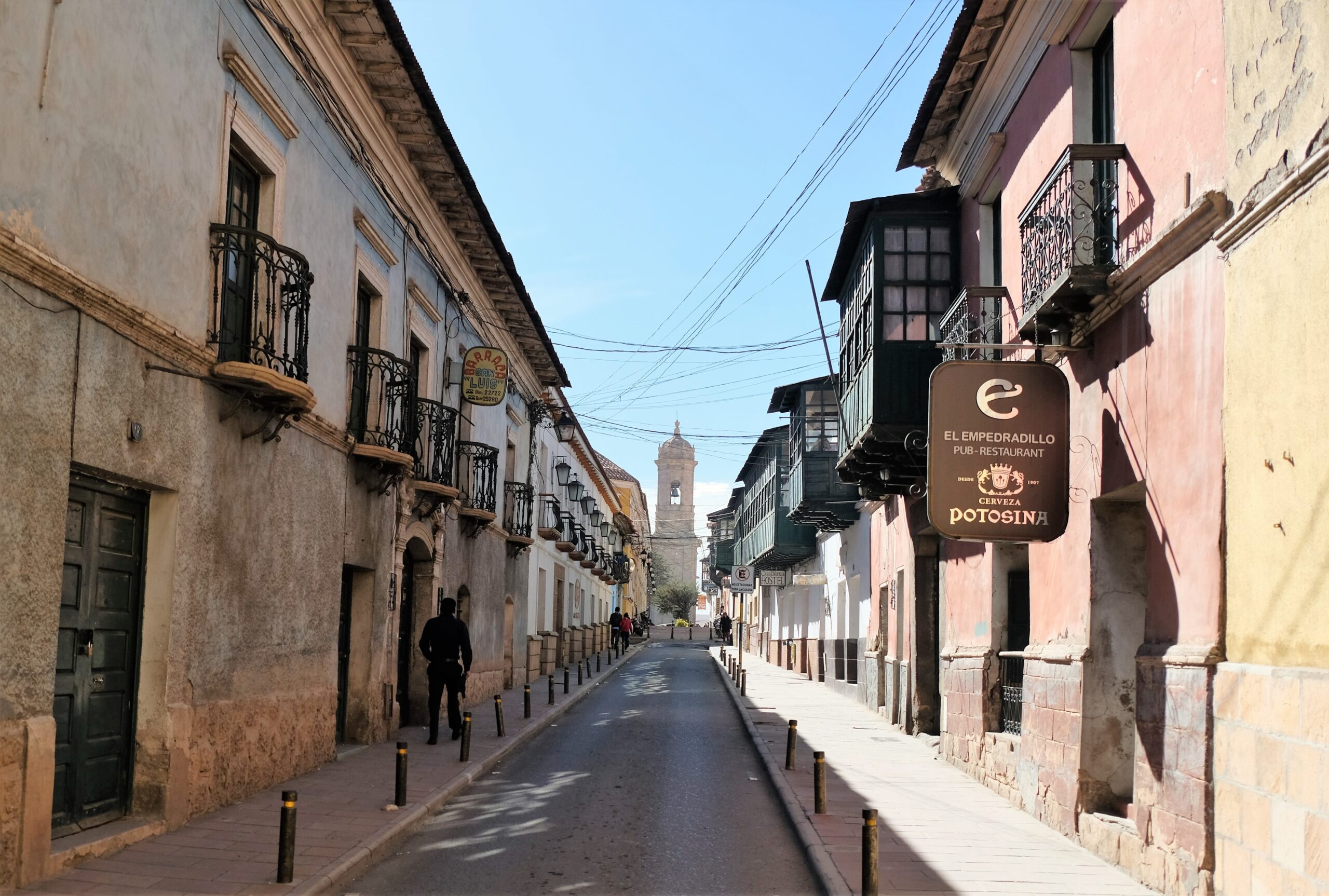
From riches to rags
How fickle is the world! Potosi’s rich streak didn’t last forever, nothing does. Silver mining declined in the 17th century, even then Potosi flourished. Since the majority of the wealth generated by the mine was shipped to Spain, by the time Bolivia gained independence demand for silver had already declined. By 1891 silver had lost its sheen and tin mining became the preferred mineral to mine. With the wealth whisked way, decline in demand and price, Potosi dwindled into a distant memory. Potosi’s location doesn’t do it any favours either. Altitude, weather and stark unforgiving landscape, it is no wonder people preferred to set up the “office” in Sucre. When the money dried up there was nothing else to keep the “visitors” there.
History
The Spanish did not discover the veins on silver in Cerro Rico, that was the Inca. Its concealment of the shiny metal may have been known to the indigenous people before the Inca’s arrived. Legend has it that Huayna Capac (I wrote a little about him in my post on Chinchero) told his men to mine every bit of silver from the mountain. Just as they were about to start a loud booming voice said, “Do not take the silver from this hill, because it is destined for other masters.” Describing the thunderous voice to the king they used the word “Potocsí”, hence where the name Potosi comes from. There is obviously scepticism about this version. Another, less fanciful explanation on how Potosi got its name is a little more simplistic. Passed down in oral history, Quechua speakers say the word potoq is an onomatopoeic word which sounds like a hammer hiding the ore. This oral tradition says Potosi got its name from the word potoq.
Potosi became a mining town in 1545, starting from nothing it flourished for the rest of the century. Production peaked during the 16th and 17th century, the ore contained 40% silver, making for easy and cheap pickings. From a dusty indigenous village in the middle of nowhere, the population ballooned to over 200 000 (around 175 000 today). Potosi became so important to the Spanish that the King gave it the title of Imperial Villa, Villa Imperial de Potosí. To put that into perspective, London’s population at that time peak at 250 000. China’s high demand for silver played a significant part in Potosi’s spectacular rise in fortunes – not just Potosi but many of South America’s silver mines especially those in Mexico.
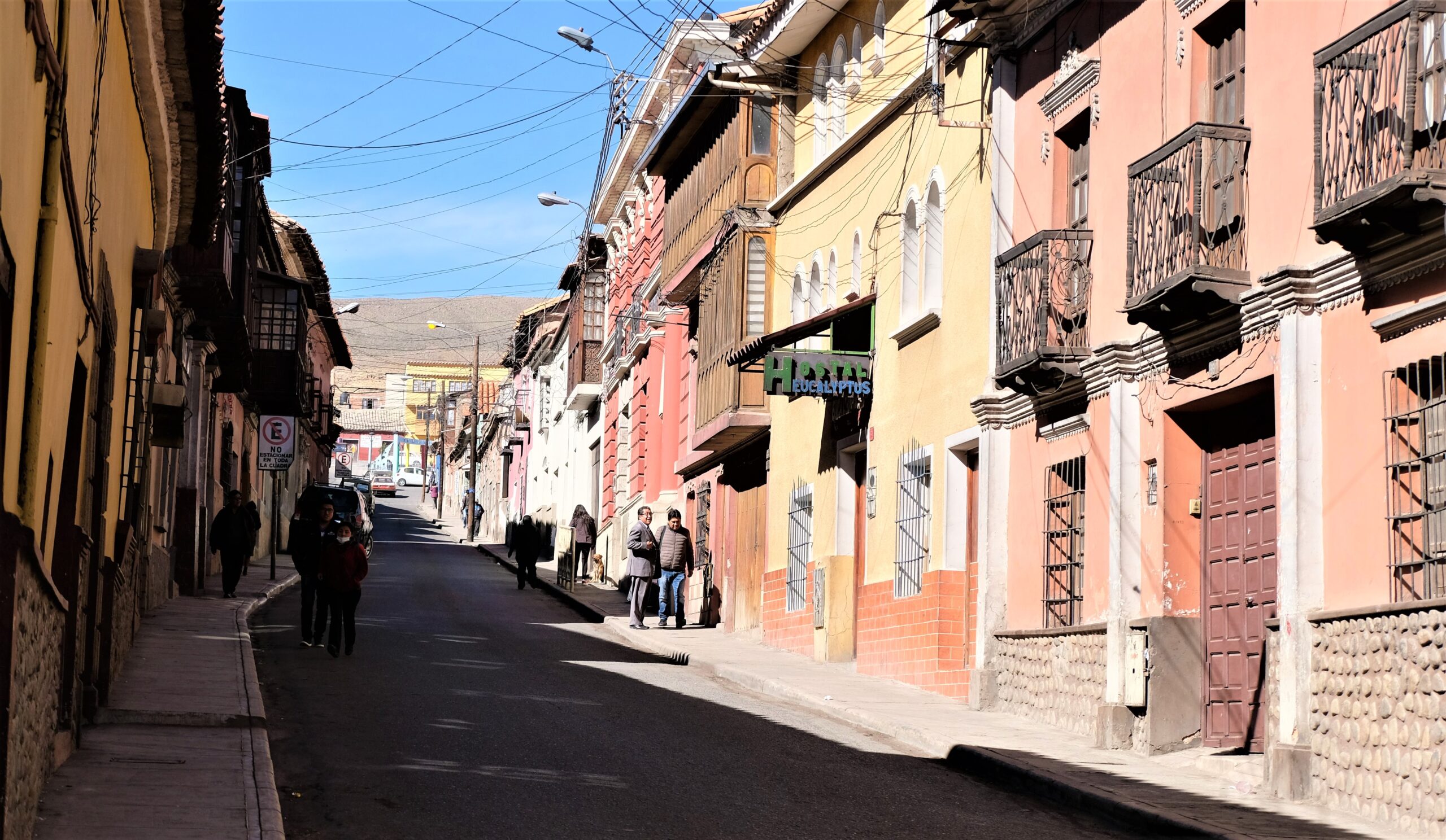
One man’s joy in another man’s misfortune
When large sums of money are made people often turn a blind eye to how it was created, such was the case in Potosi. The Spanish Empire/Crown allowed the private sector to do the mining under license. These companies were taxes on gross value mined, meaning the Spanish Crown took no risk and gained the highest reward. Mining conditions were hazardous causing many deaths and illnesses, not least because mercury was used to extract the silver. With an abundant supply of slave labour as long the money kept rolling in nobody battered an eyelid.
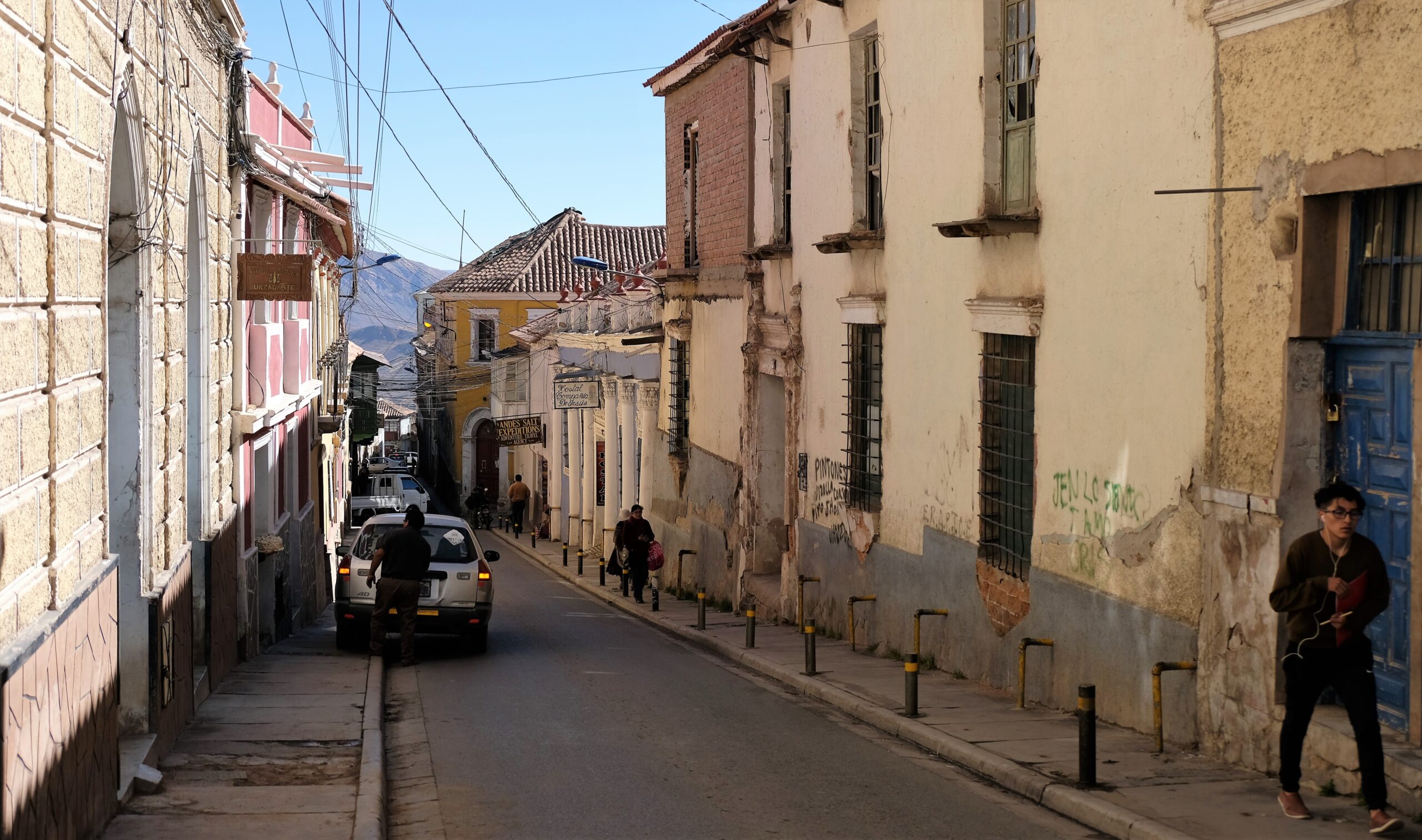
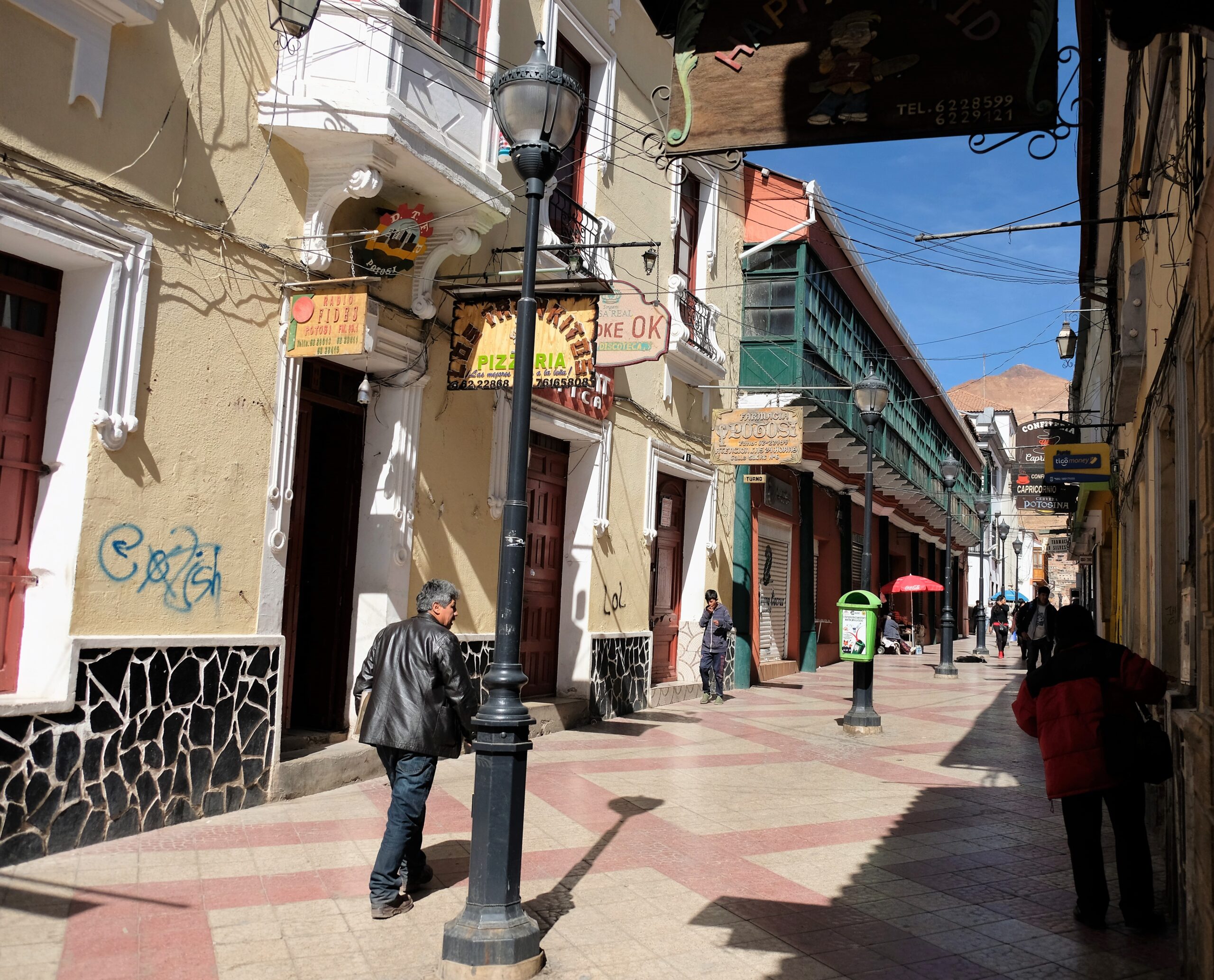
Labour
When commercial mining commenced most of the labour force were indigenous. The Spanish used fundamental Inca beliefs and social norms to leverage locals into work i.e. mita/mit’a/minka/faena; mandatory pubic service for the greater good of the community. From pneumonia to mercury poisoning the death rate for mine workers was high. Around 10% of the workforce were mitayos, 20% mingas (contractual workers) the rest were fee earning; the worst and most difficult jobs were given to mitayos. Due to the high mortality rate which was spiralling out of control, the mine owners requested 1500-2000 African slaves be imported every year. Spanish colonialists “imported” around 30 000 African slaves to work in Potosi; predominantly in the mine but also Casa de la Moneda. There they push mills instead of mules. Mules would only last a couple of months pushing mills, this was costly, using slave labour was a cheaper alternative. Putting things into perspective, the mitayos and slaves had a daily quota of carrying 25 bags from inside the mine to the surface – the bags weighed 45kg each! From being called the “Cerro Rico” / “Rich Mountain” the local Quechua speaking population started calling it “the mountain that eats men”.

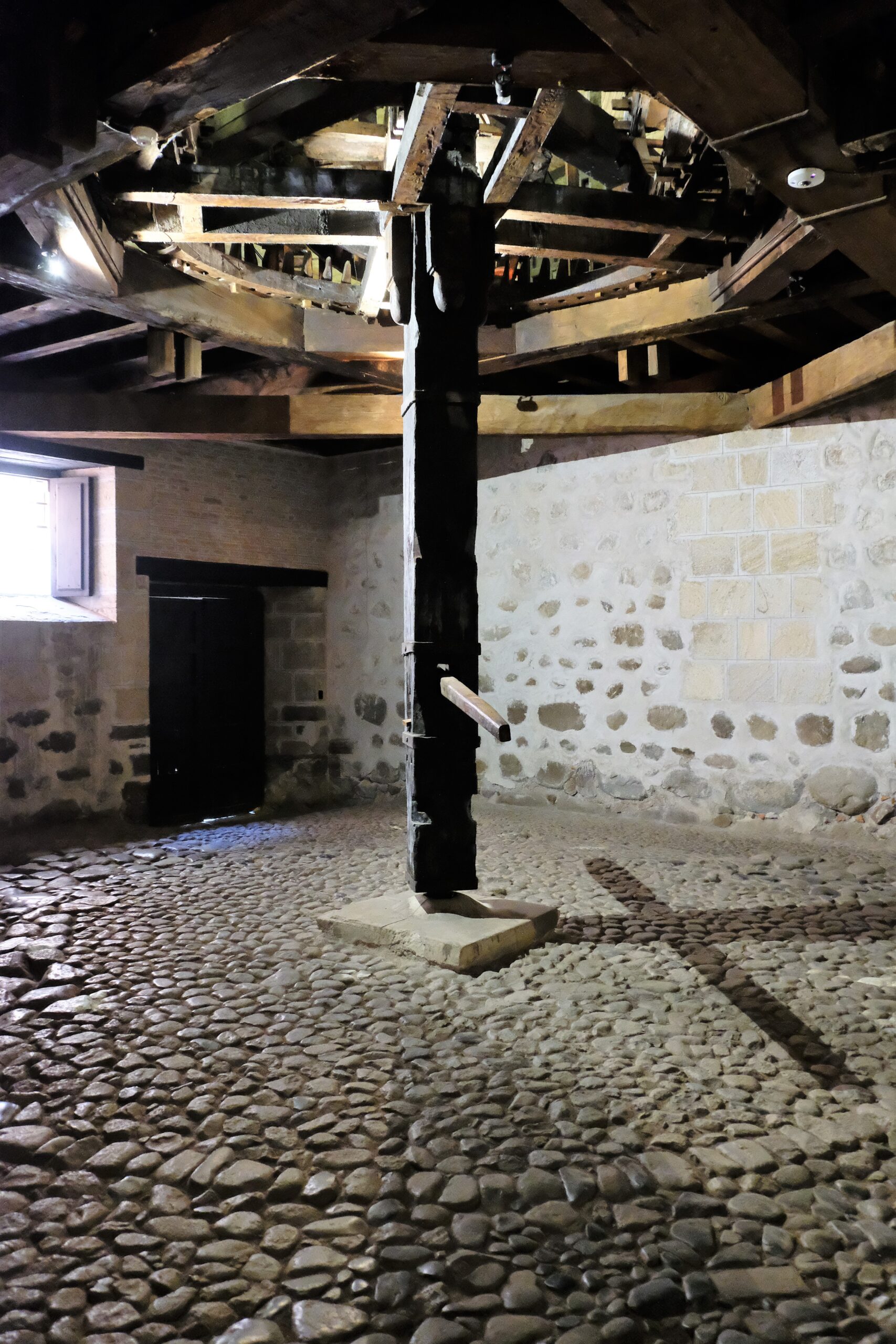
Sites to see in Potosi:
National Mint of Bolivia / Casa de la Moneda de Bolivia / Mint of Potosí
Cerro Rico supplied the raw material and the National Mint of Bolivia literally stamped the money. The mint started in 1572 making it the first mint in the Americas. Potosi has actually had two mints, the first as I mentioned started in 1572 until circa. 1767. The second mint was built largely due to massive corruption and fraud, leading to a new building which started construction in 1757 and completed in 1770. After Bolivia won its independence National Mint of Bolivia continued to produce coinage for the country right into the 20th century. By 1933 the building had been abandoned and was used as headquarters during the Chaco War fought between Bolivia and Paraguay to control a majority of the Gran Chaco region of South America. Eventually in 1940 it was somewhat restored to its former glory as a museum, celebrating the National Mint of Bolivia and its significance to Bolivia’s history.
Initially pressing the coins, Spanish pieces of eight (Real de a ocho / Peso / Spanish Dollar) was done manually. Literally hammering the silver between two dyes to create the coins. Labour was used throughout the process until the introduction of the steam presses in 1869. After the hammer production technique, screw-presses were used by labourers until 1869, then steam presses were installed.
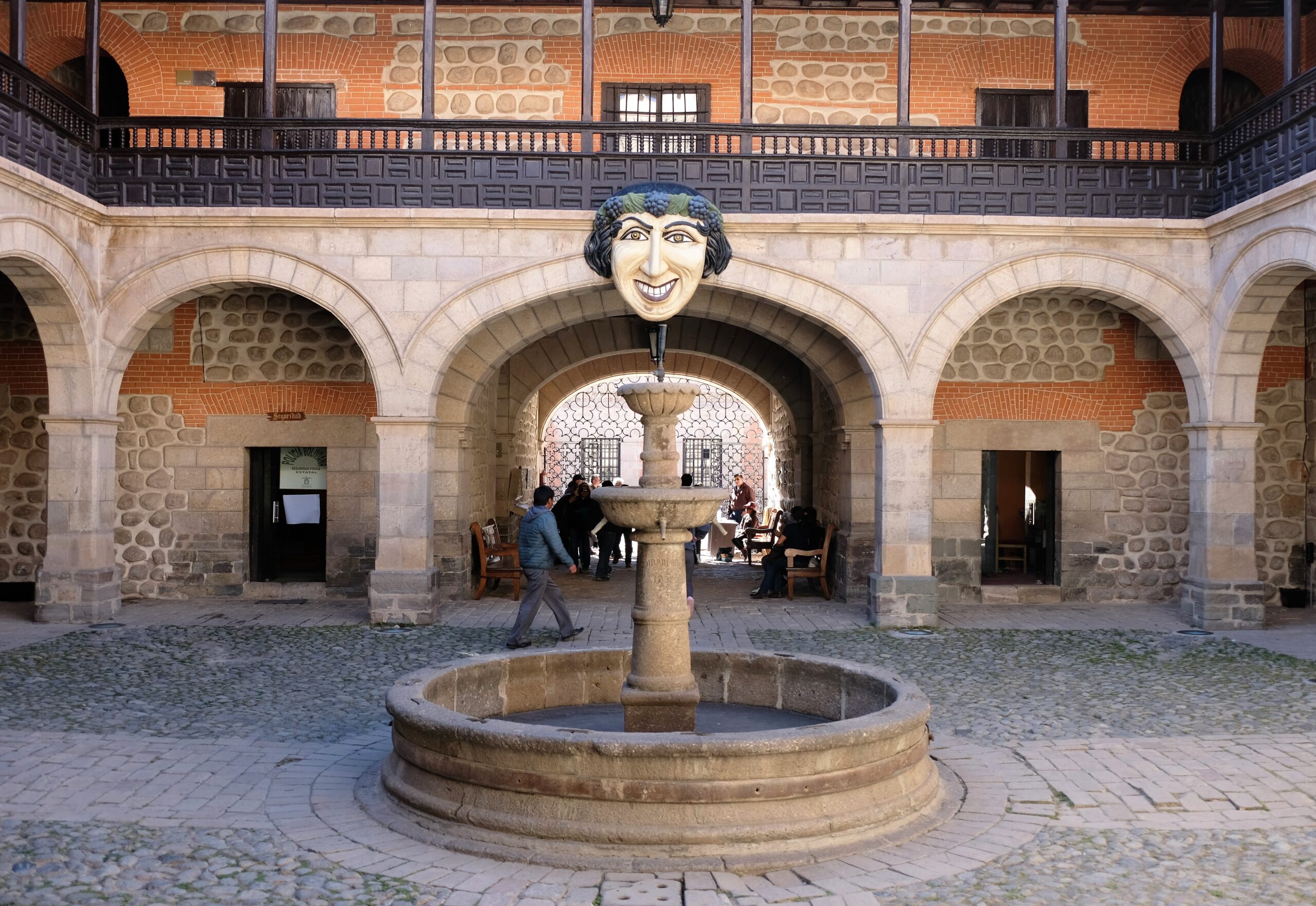
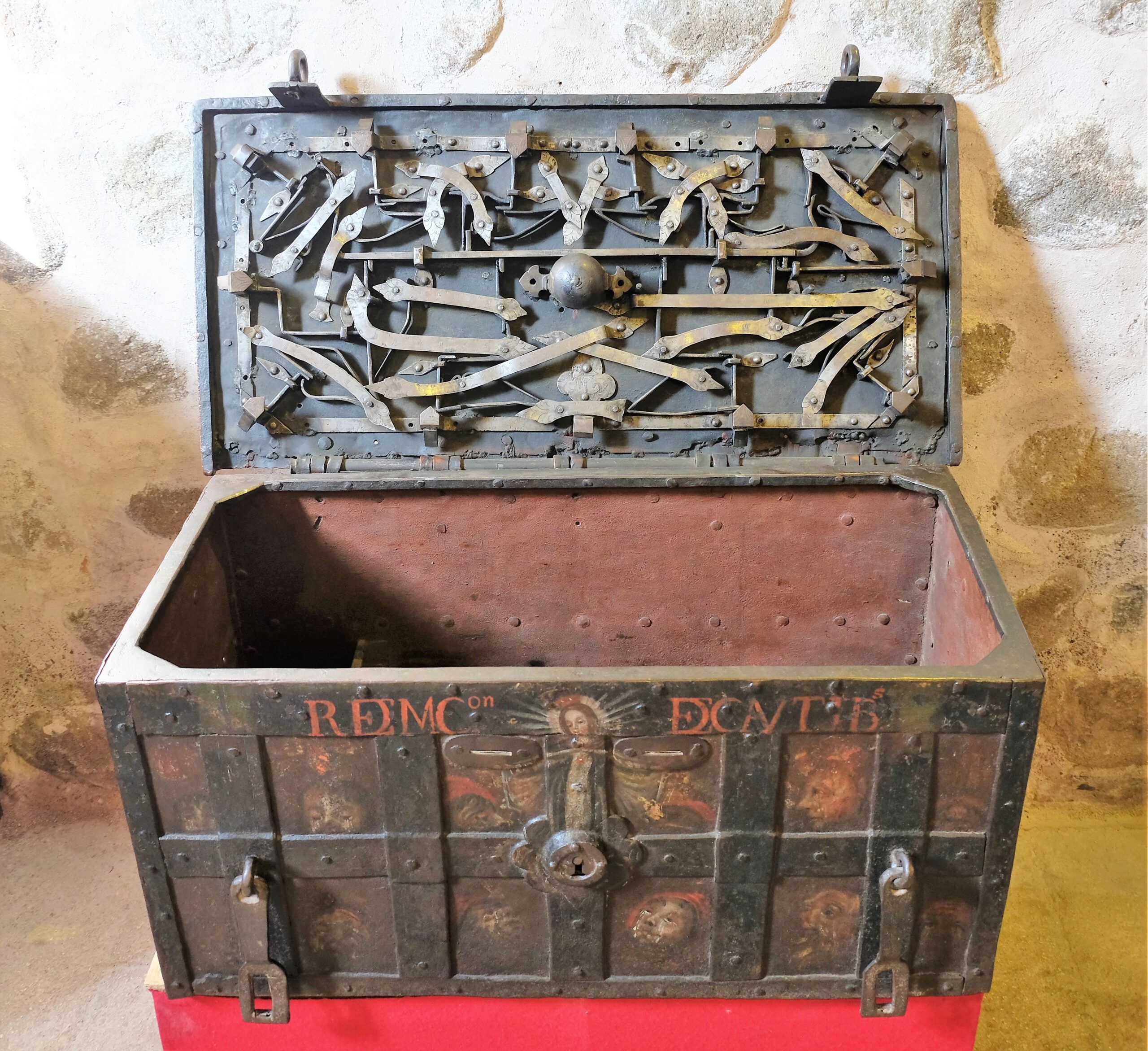
Central Plaza / Plaza 10 de Noviembre
Plaza 10 de Noviembre is the heart of historical Potosi and only two blocks from my accommodation. This is like going to London or New York two hundred years from now and only finding a little rundown village. Plaza 10 de Noviembre also referred to as Central Plaza is neat and tidy, something I had become accustomed to of places of importance to Bolivians. Bolivians are proud of their history and heritage. From Plaza 10 de Noviembre all the historical buildings are within less than a 500m radius. When I was there, I hardly saw any tourists. Instead this place is as much the tourist hotspot as it is the local’s meeting place.
One oddity about Plaza 10 de Noviembre is its shape. Well actually there are two plazas that are morphed into one. The first is called Plaza 6 de Agosto, which is a rectangular plaza from the boulevard at Banco Central de Bolivia till Plaza 10 de Noviembre. The latter is a normal square plaza as you would come to expect of a Spanish influenced plaza. Both have monuments and statues, and the obligatory water fountain, again very Spanish’esc.
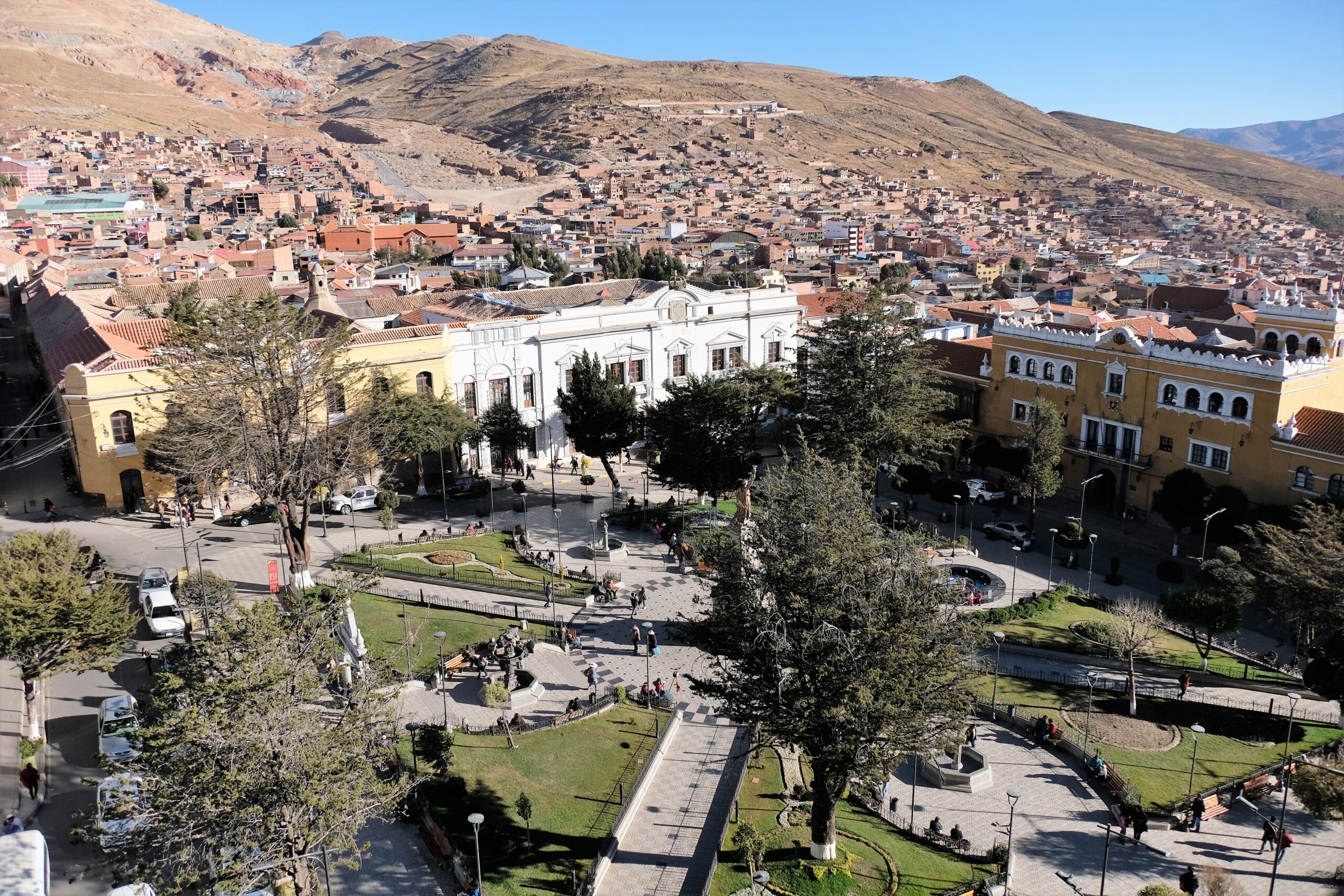
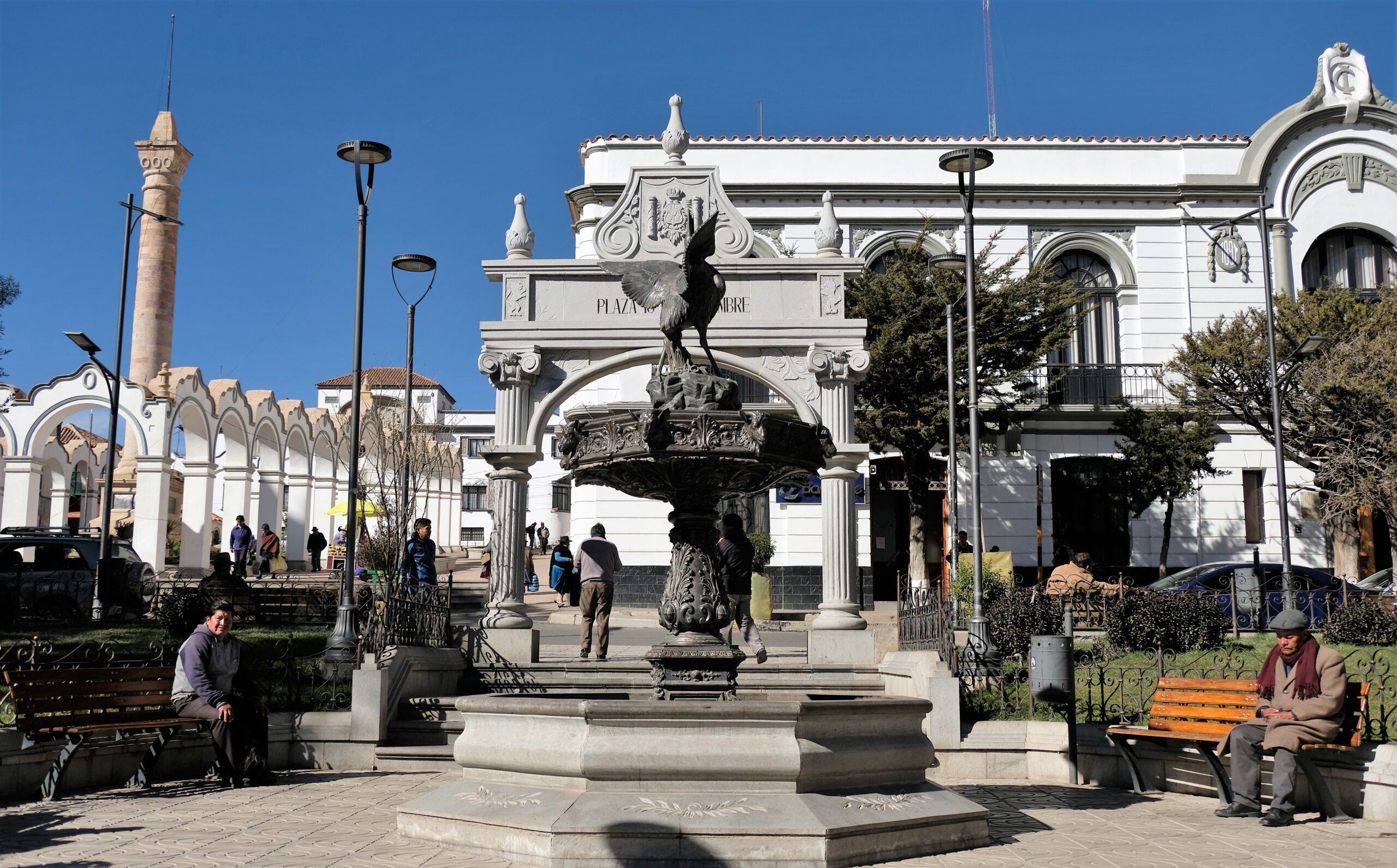
Plaza 6 de Agosto / 6th August Plaza
This plaza is often mistaken for Plaza 10 de Noviembre, however Plaza 6 de Agosto is the more photographed of the two. Plaza 6 de Agosto is a commemorative plaza celebrating Bolivia’s Day of Independence, 6th August. I could not find out what the arches are from, for, or what they represent but they may a lovely addition to the area. I saw a picture taken in 1907 and the arches were there, however I believe they were rebuilt more recently. Seems odd that the most photographed part of historical Potosi has little to no information about it. Anyway, it’s one of the more pretty part of the city.
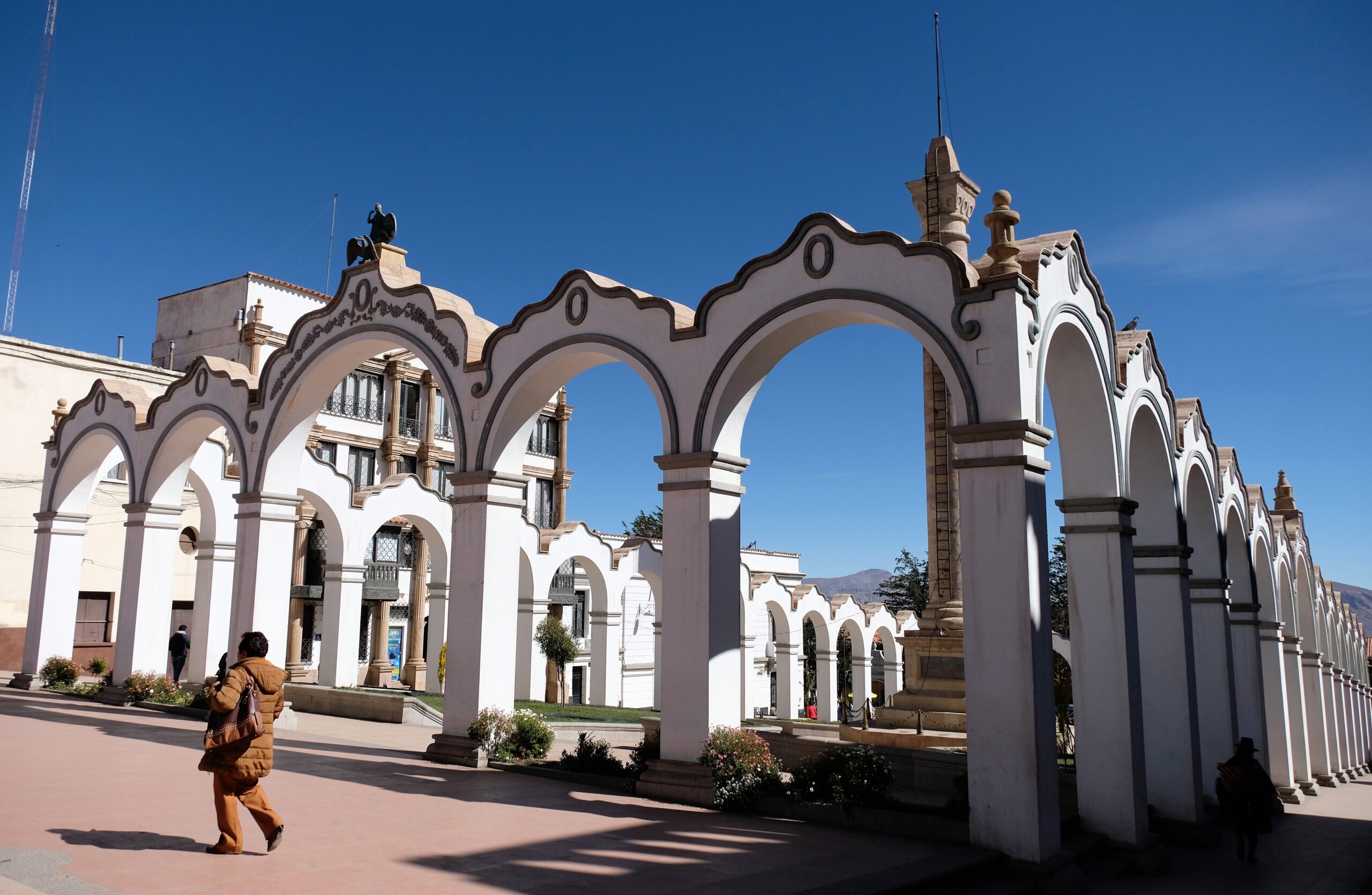
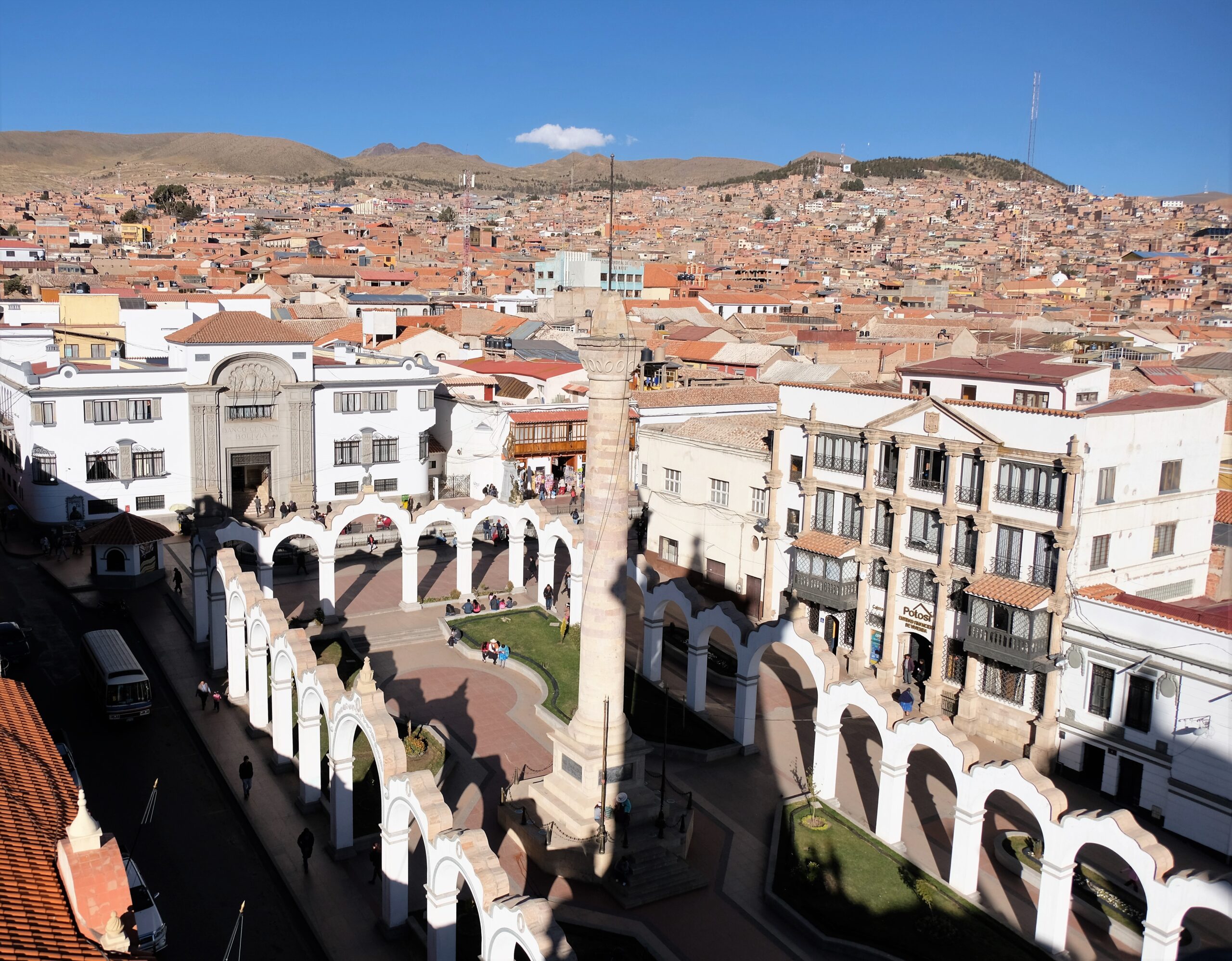
Cathedral Basilica of Potosí / Cathedral Basilica of Our Lady of Peace / Catedral Basílica de Nuestra Señora de La Paz
Referred to as Cathedral Basilica of Potosi or even Potosi Cathedral, its official name is Cathedral Basilica of Our Lady of Peace. Build between 1808 – 1838 it replaced its predecessor on the same location which collapsed in 1807. Fray Manuel Sanahuya was the main initiator supporter of the church including in its design but unfortunately died in La Paz before building was completed. Compared to the desolate environment it is built in, Cathedral Basilica of Potisi’s interior is a breath of fresh air. Build and decorated in a neoclassical style is white high white walls are a breath of fresh air. The sparingly added gold and pastel blue trip is just enough to a brightness and colour to the interior without being overbearing. A dash of off red brings the red earthen colour of Cerro Rico into this vaulted white hall.
From inside Cathedral Basilica of Potosí you get the feeling that the place hasn’t been used in quite some time, though it is maintained. To enter I used a small little door at the back of the building. It looked like they were doing restoration work. That would make sense because the interior looks newly painted. Cathedral Basilica of Potosí has some fantastic views of the city and Cerro Rico from near the rooftop up one of the bell towers. Whether this will still accessible once the “renovation” is complete I don’t know. For the views of Potosi alone, Cathedral Basilica of Potosí is worth visiting!

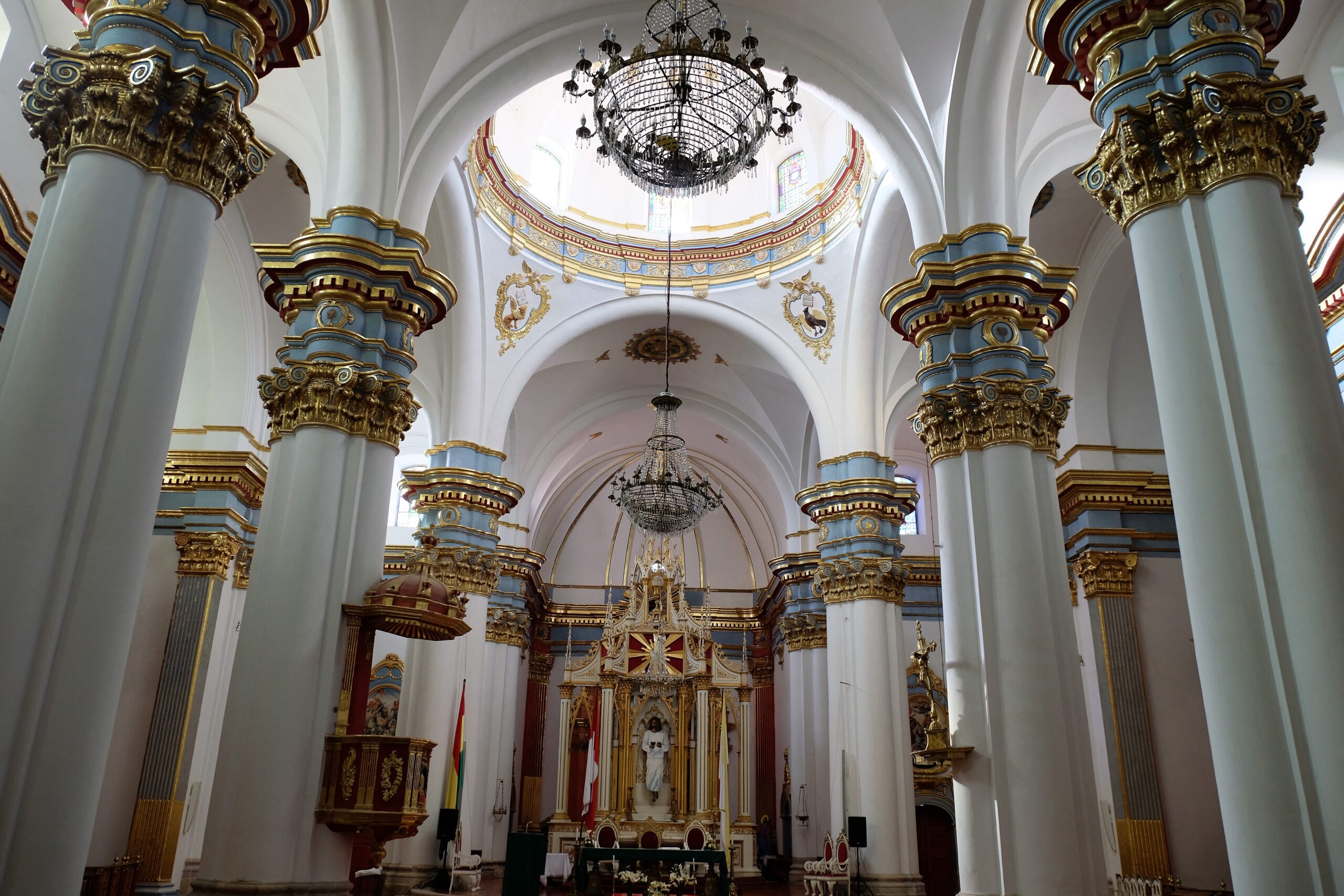
Torre de la Compañía de Jesús / Company Tower
Except for the National Mint of Bolivia, I think the Company Tower is one of the more unique structures in Potosi. What a splendid structure to house the Potosi Tourist Information Centre. I read it is adjoined to a convent, but I don’t think that is accurate. Maybe in years gone by but I don’t think that is still the case today. Standing like a triumphant arch, it may be dull in colour, but looking closer it is understatedly ornate and quite beautiful. It was once the bell tower of a Jesuit church which collapsed in 1707. Why they left the bell tower and didn’t rebuild the church I am not sure. In fact, I couldn’t really find out much about the Company Tower, at least information to correlates.
It has thirty-two twisted columns made to look like vines all in a mestizo baroque style. The earthy red colour blends into the surrounding environment and I can imagine many people have just passed it by. The reason I say it is one of the more unique structure in Potosi is twofold. First, its age and design are unlike the other churches in the city. Secondly, and to me the best thing, is the view of the city from the balcony on the first level. Through a narrow spiral staircase, you edge your way up to a bird’s eye view of the city. Here you face Cerro Rico and the extent of how it dominates the landscape for miles. Up there you are reminded of this harsh environment both visually and physically. Where breathing the limited dry air is uncomfortable whilst look at the source of what was once the richest city on earth.


Thoughts on Potosi
I’m glad I didn’t stay longer. It was interesting visiting Potosi, a stark reminder on how fortunes can change and that nothing in life is certain. I could not help but feel sorrow and anger as I ambled through the narrow streets. Years ago, this was a place of extreme wealth created by manipulation and exploitation. Nothing much has change, today these techniques are still used. It’s not that Potosi dwindled from its wealth; the locals didn’t benefit at all. Here money was created through greed without regard of any consequences and obtained through any means. Once it had served its purpose the perpetrators left, leaving devastation behind. I tried to imagine the decline of any modern city to the extent that Potosi did, it’s unfathomable.
There are many places with a similar history to Potosi, yet I don’t think any declined to such an extent in the past few hundred years. I had never heard of Potosi before, only finding out about it as a stopover to Uyuni. I’m writing this post from Dubai, I’ve been waiting to get to Saudi Arabia for weeks but due to Covid-19 I can’t. The world doesn’t seem to want to learn from its past not does it want to admit to its past either.
Next up…!?
Next stop was Uyuni. If it’s otherworldly landscapes and the best sunsets you’ve ever seen, then Uyuni is for you. That is no exaggeration! I’ve never experienced sunsets so amazing as I did in my few days on Salar de Uyuni. After I’ve posted this blog I’ll add the photos from this post and many more to my Batnomad Facebook page 2-4 days later.


